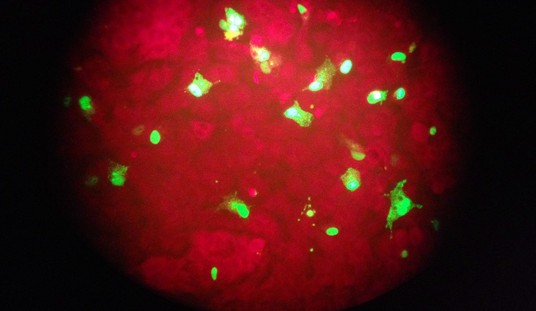Advocates for genetically modified crops depict them as a futuristic boon to humanity and the environment. Opponents call them “Frankenfoods” and demand governments ban their use. What does the data tell us? According to a new review of a large number of studies from across the spectrum, the truth falls much closer to the position of the advocates:
Genetically modified crops on the market are not only safe, but appear to be good for people and the environment, experts determined in a report released Tuesday.
But the National Academies of Sciences, Engineering, and Medicine are not just asking people to take their word for it. They’re putting the evidence up on a website so skeptics — and they know there are plenty of them — can check for themselves.
NBC News listed the main conclusions from the report, and they all look like pluses:
- There is no evidence of large-scale health effects on people from genetically modified foods
- There is some evidence that crops genetically engineered to resist bugs have benefited people by reducing cases of insecticide poisoning
- Genetically engineered crops to benefit human health, such as those altered to produce more vitamin A, can reduce blindness and deaths die to vitamin A deficiency
- Using insect-resistant or herbicide-resistant crops did not damage plant or insect diversity and in some cases increased the diversity of insects.
- Sometimes the added genes do leak out to nearby plants – a process called gene flow – but there is no evidence it has caused harm.
- In general, farmers who use GM soybean, cotton, and corn make more money but it does depend on how bad pests are and farming practices.
- GM crops do reduce losses to pests
- If farmers use insect-resistant crops but don’t take enough care, sometimes pest insects develop resistance
The “report in brief” on the website offered more details on animal and human safety:
Comparisons with conventional breeding
The committee assessed detailed surveys and experiments comparing GE to non-GE crop yields and also examined changes over time in overall yield per hectare of maize, soybean, and cotton reported by the U.S. Department of Agriculture (USDA) before, during, and after the switch from conventionally bred to GE varieties of these crops. Although the sum of experimental evidence indicates that GE herbicide resistance and insect resistance are contributing to actual yield increases, there is no evidence from USDA data that the average historical rate of increase in U.S. yields of cotton, maize, and soybean has changed.
Human Health Effects
GE crops and foods derived from them are tested in three ways: animal testing, compositional analysis, and allergenicity testing and prediction. Although the design and analysis of many animal-feeding studies were not optimal, the many available animal experimental studies taken together provided reasonable evidence that animals were not harmed by eating foods derived from GE crops. Data on the nutrient and chemical composition of a GE plant compared to a similar non-GE variety of the crop sometimes show statistically significant differences in nutrient and chemical composition, but the differences have been considered to fall within the range of naturally occurring variation found in currently available non-GE crops. Many people are concerned that GE food consumption may lead to higher incidence of specific health problems including cancer, obesity, gastrointestinal tract illnesses, kidney disease, and disorders such as autism spectrum and allergies. In the absence of long-term, case-controlled studies to examine some hypotheses, the committee examined epidemiological datasets over time from the United States and Canada, where GE food has been consumed since the late 1990s, and similar datasets from the United Kingdom and western Europe, where GE food is not widely consumed. No pattern of differences was found among countries in specific health problems after the introduction of GE foods in the 1990s.
Will this put an end to the “Frankenfood” attacks? Don’t bet on it. Despite the potential for keeping both the amount and the strength of herbicides to a minimum, the opposition to GE food has developed into a self-sustaining denialism. The real genius of the National Academies was to make the data available under one umbrella site, which allows everyone access to the evidence and undercuts the more conspiracy-theory-minded opponents from dominating the discussion. Even that, though, won’t keep a significant subset of people from assuming that the corporations are trying to kill you, man. By feeding you more food with less herbicidal content, apparently.
Exit question: Will producers still be “proud to let you know” that they’re not using GE ingredients? This video from the Modesto Bee is titled, “How to spot GMOs on your grocery store shelf,” but as you’ll see, it mainly shows consumers how to speculate as to what is GE and what isn’t. The fight continues!








Join the conversation as a VIP Member